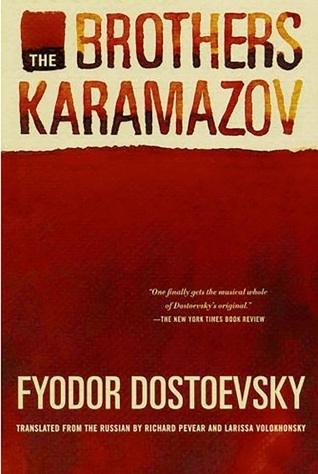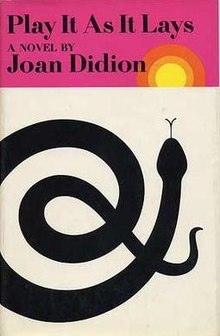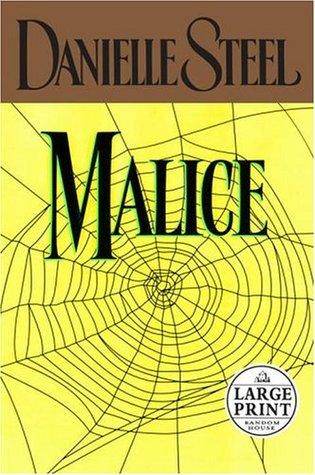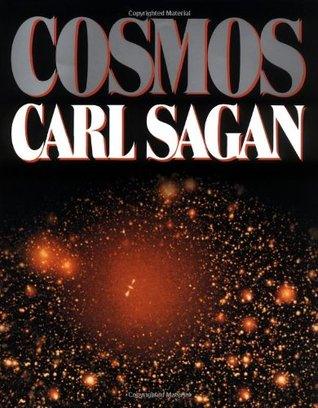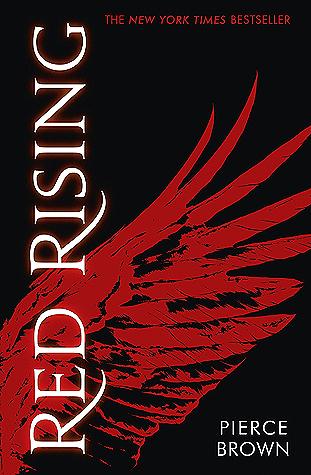The Silmarillion by J.R.R. Tolkien Book Summary
Discover the enchanting world of J.R.R. Tolkien's "The Silmarillion" with our comprehensive book summary, key insights, and in-depth review. Uncover the rich lore and timeless themes that shape Middle-earth, and explore the intricate tales of creation, heroism, and tragedy. Perfect for fans and new readers alike!
The Silmarillion Book Summary
J.R.R. Tolkien's The Silmarillion serves as the foundational mythology of Middle-earth, chronicling the creation of the world and the epic tales that preceded The Lord of the Rings. This complex masterwork weaves together stories of gods, elves, and men across thousands of years, focusing on the tragic quest for the Silmarils - three sacred jewels that drive much of the narrative's conflict. While challenging for casual readers due to its dense, biblical prose style, The Silmarillion rewards those who persevere with rich world-building and profound themes of creation, fall, and redemption that illuminate Tolkien's entire legendarium.
Discover deeper understanding and fresh perspectives by exploring The Namesake Book Summary, Review & Key Insights—your gateway to unlocking the essence and themes of this compelling novel.
The Silmarillion by J.R.R. Tolkien - Introduction
I had no idea that The Silmarillion would completely change how I see world-building in fantasy. Honestly, I picked it up thinking it was just another Tolkien book to tick off my list, but it turned out to be this epic mythological tapestry that feels more like ancient legend than just a novel.
What surprised me most was how deeply Tolkien dives into the origins of his world, Middle-earth, with stories about gods, creation, and the struggles that shape everything that happens later in The Lord of the Rings. It made me rethink how much history and myth can add real weight and meaning to a fantasy story.
I think you’d really get something out of this if you love epic fantasy or enjoy stories that feel like a blend of mythology and literature. It’s not just about adventure—it’s about understanding the roots of heroism and tragedy on a cosmic scale. Plus, if you’re into classics or want to see how fantasy can be more than just escapism, this is for you.
The book is about 386 pages, so give yourself some time—maybe a few weeks of dipping in and out, because it’s dense but totally worth it. If you like stories that make you think and feel at the same time, this one’s a gem.
So, if you’re ready for something that’s part fiction, part high fantasy, and all about epic storytelling, I’d say grab a copy. I promise it’s an adventure you won’t forget.
What is The Silmarillion About?
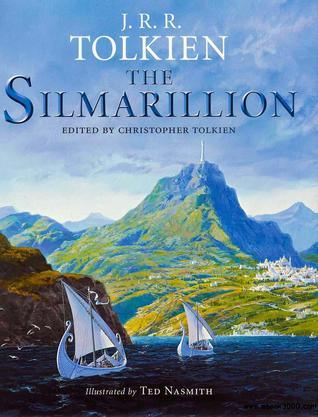
The Silmarillion by J.R.R. Tolkien is a collection of mythopoeic stories that detail the creation of Middle-earth, the rise and fall of its immortal beings, and the epic struggles between good and evil. The book's main message revolves around the themes of fate, free will, and the consequences of pride, illustrating how even the mightiest can fall. Key concepts include the significance of the Silmarils as symbols of beauty and desire, the complex relationships between Elves and Men, and the enduring battle against darkness that shapes the destiny of all beings.
About Book Author - J.R.R. Tolkien
Introducing J.R.R. Tolkien
It’s a genuine pleasure to introduce someone whose mind has charted entire ages. J.R.R. Tolkien didn't start out as the author we know from The Hobbit or The Lord of the Rings; those grew from a much deeper, personal project. The work we're focusing on, The Silmarillion, was truly his life's mythopoesis, a grand tapestry he began weaving in his youth, driven by a desire to create a mythology that he felt England lacked. What's interesting about J.R.R. Tolkien, and something I've always found fascinating, is his early work on the Oxford English Dictionary, meticulously tracing the etymology of words. This wasn't just a job; it was a profound engagement with the very building blocks of story. His understanding of language wasn't merely academic; he was a creator of languages, giving his legendary world a linguistic verisimilitude few could ever achieve. This intimate, almost instinctive grasp of how myth, language, and history intertwine is precisely why he was uniquely positioned to craft such a foundational epic.
More Books To Find
The Silmarillion - Book Overview
The Silmarillion is essentially the mythology of Middle-earth, the universe Tolkien created for The Lord of the Rings. It dives deep into the creation of the world, the rise and fall of powerful beings, and the epic tales of heroes and villains. Think of it as the Old Testament for his fantasy realm, filled with rich lore and history.
Tolkien wrote it because he wanted to create a mythos that reflected the depth of human experience, something that could resonate with our own world’s myths and legends. He wasn’t just crafting a story; he was trying to give a sense of belonging to readers, making them feel part of something larger.
What sets The Silmarillion apart from other fantasy books is its epic scope and the way it intertwines various stories and characters across eons. It’s not just a single narrative but a collection of interconnected tales that explore themes of creation, sacrifice, and the struggle between good and evil.
One story that really stuck with me is the tale of Beren and Lúthien. It’s a poignant love story where Beren, a mortal man, must retrieve a Silmaril from the crown of the dark lord Morgoth to win Lúthien’s hand. Their love transcends the boundaries of life and death, showcasing the power of love and the lengths one will go to for it. It’s both heartbreaking and beautiful, a perfect encapsulation of Tolkien’s themes.
Key Insights of The Silmarillion
The Silmarillion offers a rich tapestry of lore that deepens the understanding of Tolkien's Middle-earth. Here are five key insights:
1. Creation and Cosmology: The book begins with the Ainulindalë, the creation myth, where Eru Ilúvatar creates the world through music. This highlights the importance of harmony and the conflict between creation and discord, setting the stage for the struggles that follow.
2. The Silmarils: Central to the narrative are the Silmarils, three jewels crafted by Fëanor. They embody the light of the Two Trees and symbolize the desire for beauty and immortality, leading to both inspiration and tragedy among the Elves and Men.
3. Themes of Power and Corruption: The quest for the Silmarils reveals how ambition and envy can corrupt even the noblest of beings. Fëanor's pride leads to strife among the Elves, showcasing the destructive nature of unchecked desire.
4. The Fall of Númenor: The tale of Númenor illustrates the downfall of a great civilization due to hubris and the refusal to accept mortality. This serves as a cautionary tale about the consequences of defying natural order.
5. Legacy and Hope: Despite the darkness, the book emphasizes the theme of hope and redemption. Characters like Beren and Lúthien and Aragorn in later works represent the enduring spirit of love and sacrifice, suggesting that even in despair, light can prevail.
These insights reflect Tolkien’s deep understanding of human nature and the timeless themes that resonate throughout his works.
Who Should Read This Book
"The Silmarillion" by J.R.R. Tolkien is a must-read for fans of high fantasy and those who appreciate rich world-building. It appeals to readers who seek a deeper understanding of Middle-earth's lore, history, and mythology beyond "The Hobbit" and "The Lord of the Rings." Scholars and enthusiasts of literature will find value in Tolkien's intricate storytelling and language. Additionally, anyone fascinated by themes of creation, heroism, and the struggle between good and evil will be captivated by this profound narrative. Ultimately, it's an essential read for anyone wishing to immerse themselves in Tolkien's imaginative universe.
Read If You Are
- A fan of epic fantasy and world-building who wants to explore the rich lore behind Middle-earth.
- Someone interested in the origins of beloved characters and stories from "The Hobbit" and "The Lord of the Rings."
- A reader who appreciates intricate mythology and the themes of creation, heroism, and sacrifice.
Skip If You Are
- not a fan of complex, intricate world-building and mythology
- looking for a straightforward narrative with a clear plot
- seeking a light, easy read without deep philosophical themes
Important Takeaways from this Book
-
Embrace Creativity: Set aside 30 minutes daily to write or create something new, inspired by Tolkien’s rich world-building. This practice nurtures your imagination and enhances your creative skills, allowing you to express yourself more freely. No specific tools are needed—just a notebook or a digital device.
-
Cultivate Resilience: Identify a current challenge in your life and write down three actionable steps to overcome it. This mirrors the perseverance of characters like Beren and Lúthien. Building resilience helps you tackle obstacles effectively and strengthens your problem-solving abilities.
-
Foster Community: Reach out to a friend or family member you haven’t connected with in a while. Schedule a coffee date or a video call. Just as the Elves and Men came together for greater purposes, nurturing your relationships can provide emotional support and enrich your life.
-
Practice Gratitude: Each evening, jot down three things you’re grateful for that day. This habit reflects the appreciation of beauty found in Tolkien’s works. Practicing gratitude improves your mental well-being and shifts your focus towards positivity.
-
Explore Nature: Dedicate one hour this weekend to walk in a nearby park or natural setting. Take inspiration from Tolkien’s love for nature and its significance in his stories. Engaging with the outdoors reduces stress, boosts your mood, and fosters a deeper connection with the world around you.
Book Review
I approached The Silmarillion with high hopes, expecting an epic tapestry of lore that would expand my love for Middle-earth. What I got was a richly woven collection of myth and history that felt more like a textbook than a novel.
One of the strengths of The Silmarillion is Tolkien's incredible world-building. The depth of the languages, cultures, and histories is astonishing. For instance, the creation myth of Eru Ilúvatar and the Ainulindalë captivated me with its poetic beauty. The characters, like Fëanor and Beren, are complex and memorable, showcasing Tolkien's ability to create legends that feel both grand and personal.
However, I found the pacing to be uneven. The narrative often jumps through time and characters at a rapid pace, which can make it hard to connect emotionally with the story. The writing style, while lyrical, sometimes felt dense and convoluted, making it a challenge to stay engaged. For example, the detailed genealogies and battles, while fascinating, became overwhelming and detracted from the narrative flow.
In comparison to other fantasy works, like Robert Jordan's Wheel of Time series, The Silmarillion lacks the character-driven storytelling that keeps me turning pages. It’s more of a reference book for the lore of Middle-earth than a cohesive narrative.
Overall, I think The Silmarillion is a must-read for die-hard Tolkien fans and those who appreciate deep lore. However, if you're looking for a straightforward story with character development, you might want to start with The Hobbit or The Lord of the Rings instead.
Final Thoughts
If I'm being honest, finishing The Silmarillion was like unearthing a hidden treasure trove of lore and history. My overall takeaway is that Tolkien's world-building is unparalleled; he creates a rich tapestry that feels both ancient and alive. I'd definitely recommend this if you're a fan of epic fantasy or if you love diving deep into the mythology behind a story. However, skip this one if you're looking for a straightforward narrative or character-driven plot—this is more about the grand sweep of history than individual journeys.
The thing that surprised me most was how much emotional weight the tales carried, especially the tragedy of the Silmarils and the conflicts among the Elves. Months from now, I think the intricate relationships between the characters will stick with me, particularly the consequences of pride and ambition.
Would I read it again? Probably not in full, but I’d recommend it to those who appreciate Tolkien's work. The summary gives a good overview, but the depth of the full text is something special. Personally, I found the experience enriching, even if it was sometimes dense. It’s a journey worth taking for those who are willing to invest the time.
Frequently Asked Questions
How long does it take to read The Silmarillion?
Reading The Silmarillion, which has 386 pages, typically takes around 10 to 15 hours, depending on your reading speed and comprehension. Some may take longer to fully appreciate Tolkien's intricate world and storytelling.
What makes "The Silmarillion" different from other books in this genre?
The Silmarillion stands out for its rich mythology, intricate world-building, and deep historical context, offering a profound exploration of themes such as creation, fate, and free will. Unlike typical fantasy novels, it reads more like a sacred text, weaving together stories of gods, heroes, and epic conflicts.
Who is the target audience for The Silmarillion
The target audience for "The Silmarillion" includes fans of epic fantasy, mythology enthusiasts, and readers interested in J.R.R. Tolkien's Middle-earth lore. It appeals to those who appreciate intricate world-building, deep narratives, and rich historical context, often attracting mature readers and dedicated Tolkien followers.
Are there any criticisms or limitations of The Silmarillion
Critics often point to its dense prose and complex structure, which can be challenging for readers. Some feel it lacks the character development found in Tolkien's other works, making it less accessible. Additionally, its mythological scope may not appeal to those seeking a traditional narrative.
What is the main theme of The Silmarillion by J.R.R. Tolkien
The main theme of The Silmarillion is the struggle between good and evil, exploring the consequences of pride, the pursuit of beauty and power, and the importance of sacrifice and redemption. It delves into the creation of Middle-earth and the epic tales of its inhabitants.
Tags:
J.R.R. Tolkien, The Silmarillion, The Silmarillion Book, The Silmarillion Book Rating, The Silmarillion Book Review, The Silmarillion Book Summary, The Silmarillion By J.R.R. Tolkien, The Silmarillion Description, The Silmarillion Short Summary

Michel Fisher
Michel Fisher is a passionate fiction enthusiast and book blogger who writes about emotional reads, character-driven stories, and contemporary romance authors that captivate hearts and minds.

The Silmarillion
Book Overview
Description
A number-one New York Times bestseller when it was originally published, THE SILMARILLION is the core of J.R.R. Tolkien's imaginative writing, a work whose origins stretch back to a time long before THE HOBBIT.Tolkien considered THE SILMARILLION his most important work, and, though it was published last and posthumously, this great collection of tales and legends clearly sets the stage for all his other writing. The story of the creation of the world and of the the First Age, this is the ancient drama to which the characters in THE LORD OF THE RINGS look back and in whose events some of them, such as Elrond and Galadriel, took part. The three Silmarils were jewels created by Feanor, most gifted of the Elves. Within them was imprisoned the Light of the Two Trees of Valinor before the Trees themselves were destroyed by Morgoth, the first Dark Lord. Thereafter, the unsullied Light of Valinor lived on only in the Silmarils, but they were seized by Morgoth and set in his crown, which was guarded in the impenetrable fortress of Angband in the north of Middle-earth. THE SILMARILLION is the history of the rebellion of Feanor and his kindred against the gods, their exile from Valinor and return to Middle-earth, and their war, hopeless despite all their heroism, against the great Enemy.This second edition features a letter written by J.R.R. Tolkien describing his intentions for the book, which serves as a brilliant exposition of his conception of the earlier Ages of Middle-earth.
Key Points
Creation myth of Middle-earth
Characters
Gandalf, Saruman, Elrond Half-elven, Galadriel, Finwë, Fingolfin, Celebrian, Bregor, Beren, Túrin Turambar, Húrin Thalion, Niënor, Glaurung, Fëanor, Tuor, Lúthien, Morgoth
Publisher
Houghton Mifflin Company
First Publish Date
09/15/77
Awards
Locus Award for Best Fantasy Novel (1978), Ditmar Award for Best International Long Fiction (1978), Gandalf Award (1978)

